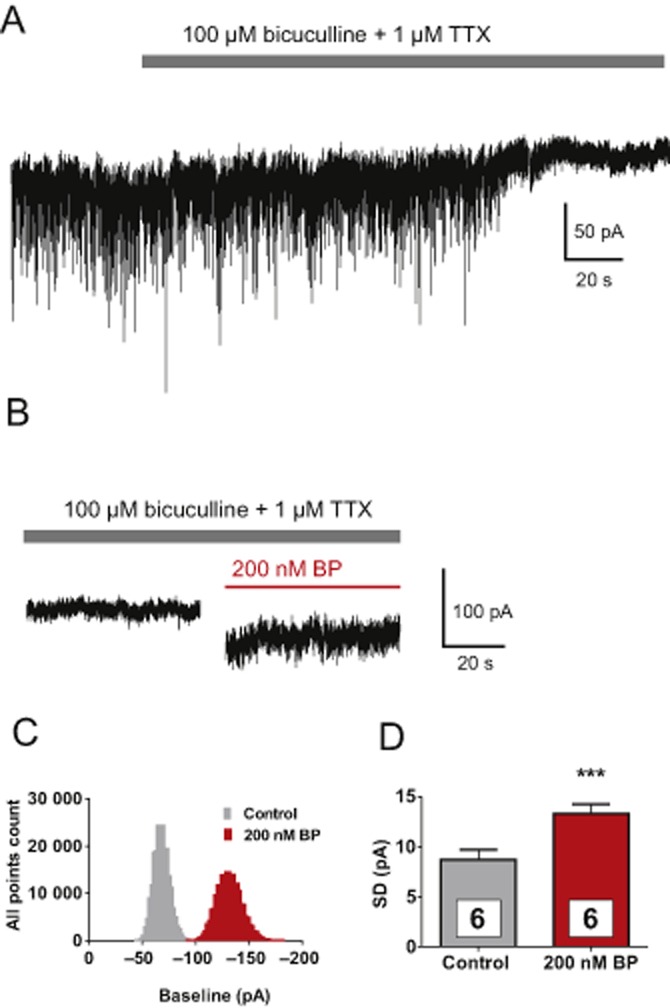Figure 5.

4-bromopropofol induced a tonic current and increased current fluctuations in voltage-clamped ventral horn neurons. (A) During a whole-cell voltage-clamp recording, the membrane potential was clamped to −70 mV. Action potential-dependent synaptic events were abolished by adding TTX (1 μM) to the perfusate. In addition, GABAA receptor-dependent conductance was blocked by bicuculline (80 μM). (B) With TTX and bicuculline still present, application of 4-bromopropofol (BP) caused a large negative shift in the baseline current and increased the noise level. (C) The corresponding all point histograms of the currents indicate that the baseline was shifted to more negative values by 4-bromopropofol. (D) The distribution of the baseline fluctuations (membrane noise) as observed before and after exposing the cells to 4-bromopropofol was well fitted with a Gaussian function. 4-bromopropofol significantly increased the SD of the fitted curves [control 8.7 ± 0.96 pA (n = 6) vs. 4-bromopropofol (n = 6) 13.3 ± 0.91 pA. ***P < 0.001, significantly different from control; t-test].
